Drinking Water Week

Drinking Water Week
Hendersonville Celebrates Drinking Water Week 2023, Invites Community Participation
The City of Hendersonville and partners throughout North America today kicked off Drinking Water Week, a decades-long tradition led by the American Water Works Association. Taking place May 5-11 this year, Drinking Water Week is a celebration recognizing the vital role water plays in everyday life for both water professionals and the communities they serve.
Hendersonville is observing Drinking Water Week by inviting the public to learn about how truly vital clean, safe water is in daily life and its role in protecting public health and the environment now and in the future. This year, Drinking Water Week encourages participants to recognize and honor the critical work that water professionals accomplish around the clock to deliver quality tap water while bolstering resilience for water in the future.
Mountains on Tap - Tap Water Branding Project
In honor of Drinking Water Week, the Hendersonville Water and Sewer Department is excited to unveil our new rebranded tap water: "Mountains on Tap"!
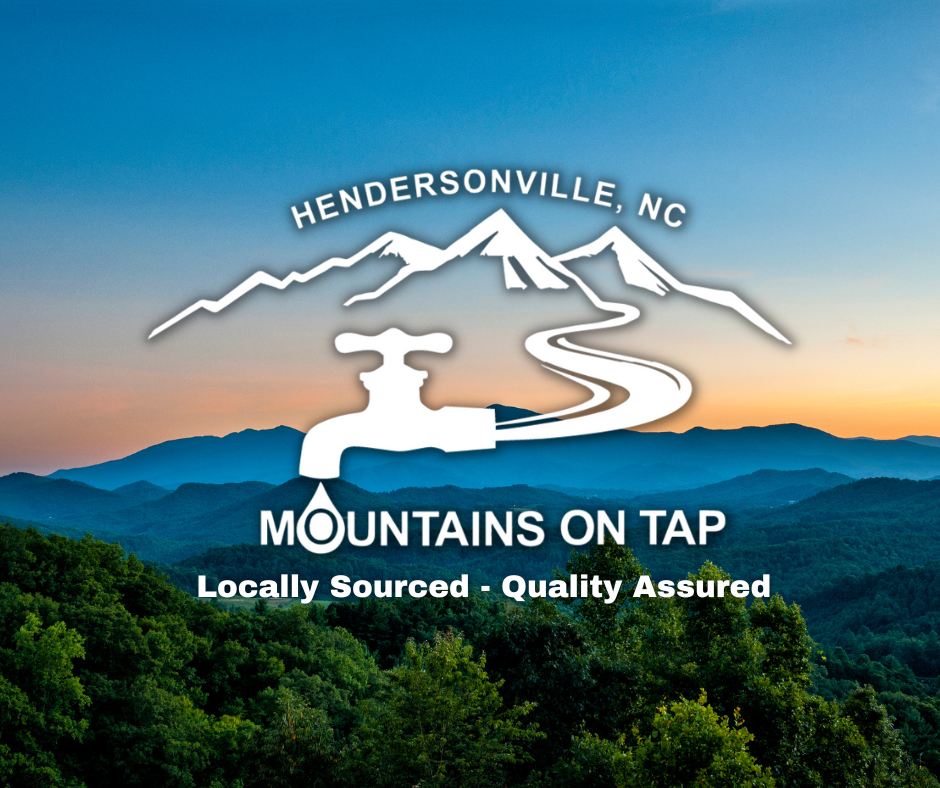
Hendersonville believes that every person deserves access to clean, refreshing water straight from the tap, and we're thrilled to celebrate this week by showcasing our efforts to make that vision a reality.
How Your Water Is Treated
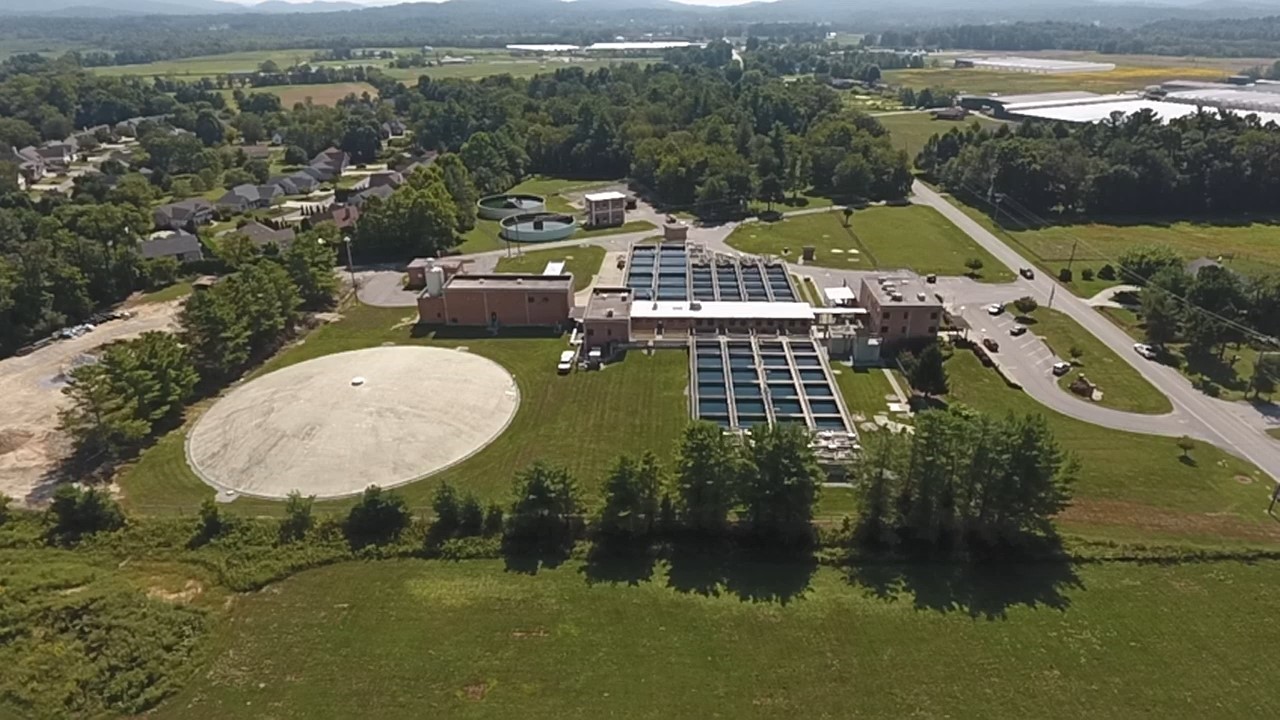 The Hendersonville Water Treatment Facility has several sources for water such as Bradley Creek, and North Fork impoundments in the Pisgah National Forest as well as at a raw water pump station off the main stem of Mills River. The plant has a capacity of 12 million gallons per day and the average production is currently 7.5 million gallons per day. It is a conventional treatment facility using flocculation, coagulation, sedimentation, and filtration processes to treat the water. The plant is staffed by 12 employees at the facility to do it all, and they operate 24/7/365 nonstop. Staff monitors more than 100 tank sites, pump stations, and other sites across Henderson County within the water system.
The Hendersonville Water Treatment Facility has several sources for water such as Bradley Creek, and North Fork impoundments in the Pisgah National Forest as well as at a raw water pump station off the main stem of Mills River. The plant has a capacity of 12 million gallons per day and the average production is currently 7.5 million gallons per day. It is a conventional treatment facility using flocculation, coagulation, sedimentation, and filtration processes to treat the water. The plant is staffed by 12 employees at the facility to do it all, and they operate 24/7/365 nonstop. Staff monitors more than 100 tank sites, pump stations, and other sites across Henderson County within the water system.
The Hendersonville Water Treatment Plant provides water to approximately 70,000 people including homes, hospitals, businesses, and industries as well we providing water for fire protection across Henderson County.
The Water Treatment Plant staff considers their job a calling and their mission is to provide this critical resource for the community.
Where Does Your Water Come From?
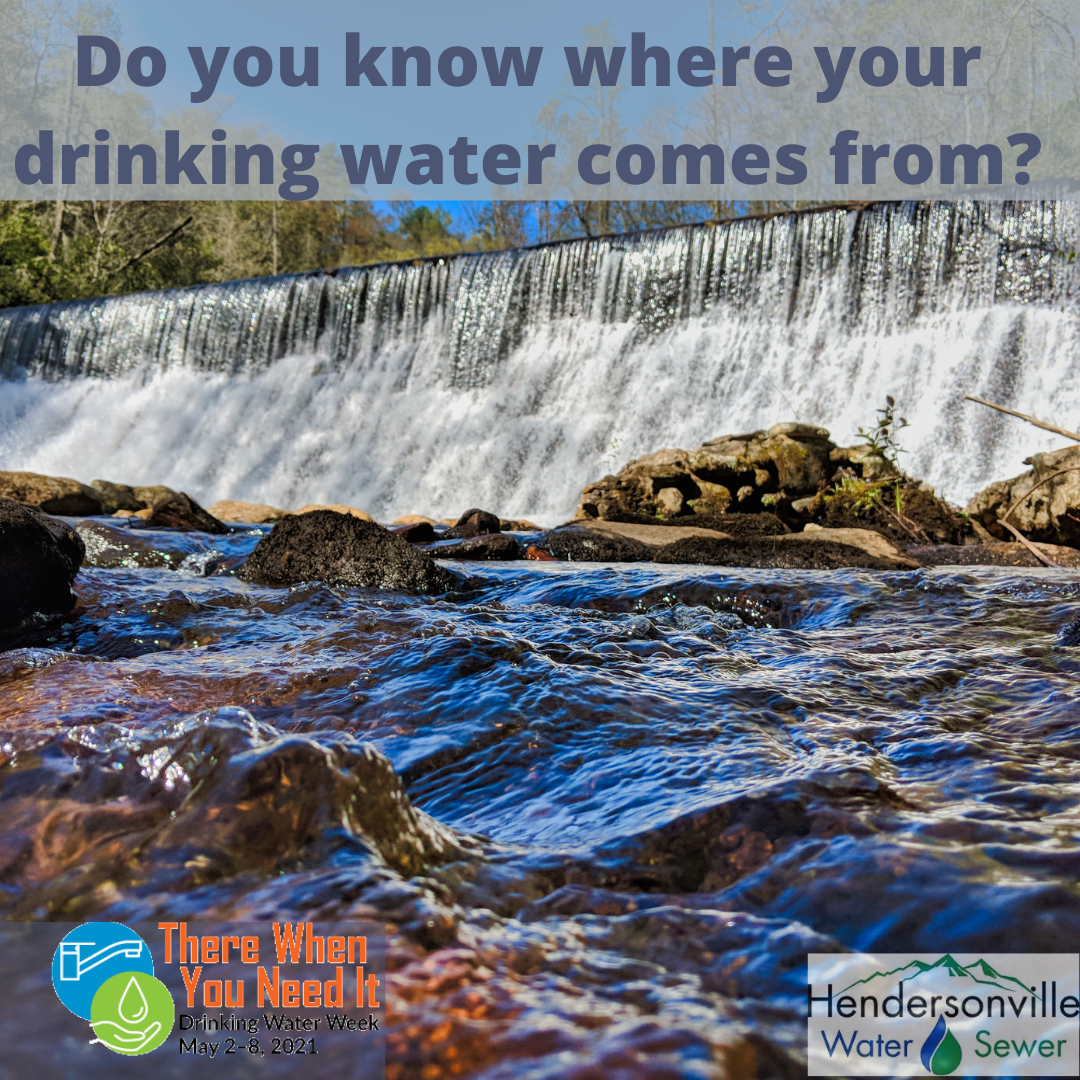 The source of drinking water for the City of Hendersonville is pulled from three different locations. Two intakes are located deep within the Pisgah National Forest, inside the Mills River watershed. These are gravity fed systems supply about 50% of the water demand for Hendersonville. The water in these locations originates from small headwater streams that are fed by a mix of spring heads, seeps, rain/snow, runoff, and groundwater flow. Several tributaries such as Senaird, Foster, and Queen come together to form Mills River. This is the third intake which supplies the other 50% of water demand.
The source of drinking water for the City of Hendersonville is pulled from three different locations. Two intakes are located deep within the Pisgah National Forest, inside the Mills River watershed. These are gravity fed systems supply about 50% of the water demand for Hendersonville. The water in these locations originates from small headwater streams that are fed by a mix of spring heads, seeps, rain/snow, runoff, and groundwater flow. Several tributaries such as Senaird, Foster, and Queen come together to form Mills River. This is the third intake which supplies the other 50% of water demand.
The water located in these systems is generally low in Dissolved Organic Carbon, Specific Conductance, and Turbidity, which creates ideal conditions for many native aquatic species. Having native aquatic life in our streams is a good indicator of overall stream health. Water quality can be impaired from fertilizer/pesticide runoff from agricultural farms and from sediment transport. However, the water quality in Mills River watershed is protected from sediment and nutrient transport by Best Management Practices or BPM's.
Common BMP's include grassed waterways, agricultural field borders, vegetation buffers, stormwater ponds, road stabilization projects, and stream/riverbank stabilization projects. Together these efforts work to lower the amount sediment and nutrient transport from stormwater runoff maintaining high water quality. We are very fortunate in where we live, to have access to such incredible sources for our drinking water!
How Your Water Is Delivered
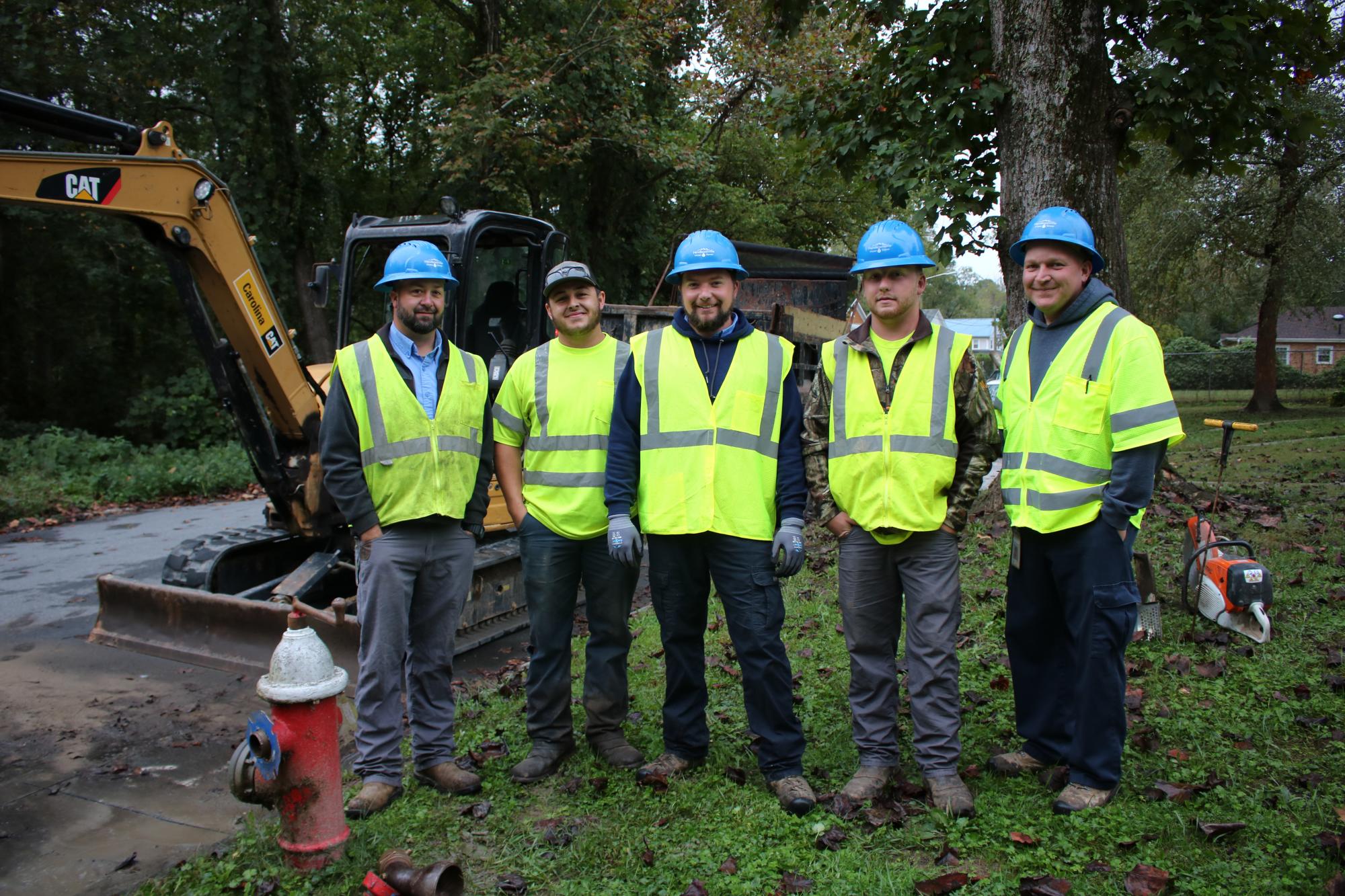 City of Hendersonville Field Operations
City of Hendersonville Field Operations
This group is comprised of 3-divisions including Systems Maintenance, Excavations and Facilities Maintenance with a total of 44-employees. These divisions are responsible for maintaining the following infrastructure within the City’s water and sewer systems:
- Over 580-miles of water lines ranging in size from 2-inches up to 24-inches from Etowah to Edneyville to Fletcher and down to Saluda serving a population of approximately 70,000;
- Over 180-miles of sewer lines including approximately 150-miles of gravity sewer ranging in size from 6-inches up to 42-inches and approximately 30-miles of pressure sewer line ranging in size from 2-inches up to 8-inches serving a population over 20,000;
- 22-water storage tanks ranging in size from 50,000-gallons up to 1,500,000-gallons;
- 55-water pumping stations and 30-sewer pumping stations.
Their responsibilities include maintaining all water and sewer lines, inspecting lines with CCTV, repairing water leaks, unstopping sewer blockages, maintaining all water and sewer rights-of-way, installing new service connections, maintaining all pumping stations and water storage tanks, replacing damaged and aged out hydrants, and exercising and replacing system valves.
We All Live Downstream!
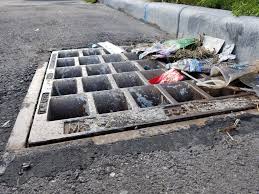 Over 80% of the U.S. population gets their drinking water from surface water sources. According to the EPA, stormwater runoff is the number one impairment to surface water quality in the US today. When it rains, stormwater runoff picks up loose debris, pesticides, herbicides, oil, and other types of pollution in its path. This cocktail of contaminants is then dumped into nearby waterways we use for swimming, fishing, and providing drinking water. This can cause a host of health and environmental issues for the people that live downstream. It is important for everyone to do their part in trying to reduce stormwater pollution to maintain clean drinking water sources. Here are some things you can do to prevent stormwater pollution and protect water quality in your community!
Over 80% of the U.S. population gets their drinking water from surface water sources. According to the EPA, stormwater runoff is the number one impairment to surface water quality in the US today. When it rains, stormwater runoff picks up loose debris, pesticides, herbicides, oil, and other types of pollution in its path. This cocktail of contaminants is then dumped into nearby waterways we use for swimming, fishing, and providing drinking water. This can cause a host of health and environmental issues for the people that live downstream. It is important for everyone to do their part in trying to reduce stormwater pollution to maintain clean drinking water sources. Here are some things you can do to prevent stormwater pollution and protect water quality in your community!
- Use a commercial car wash or wash your car on a lawn or other unpaved surface
- Recycle used oil and other automotive fluids at participating service stations. Donât dump these chemicals down the storm drain.
- Use pesticides and fertilizers sparingly.
- Use hazardous substances like paints, solvents, and cleaners in the smallest amounts possible, and follow the directions on the label. Clean up spills immediately, and dispose of the waste safely.
- Pick up pet waste and dispose of it properly.
- Have your septic system inspected by a professional at least every 3 years, and have the septic tank pumped as necessary.
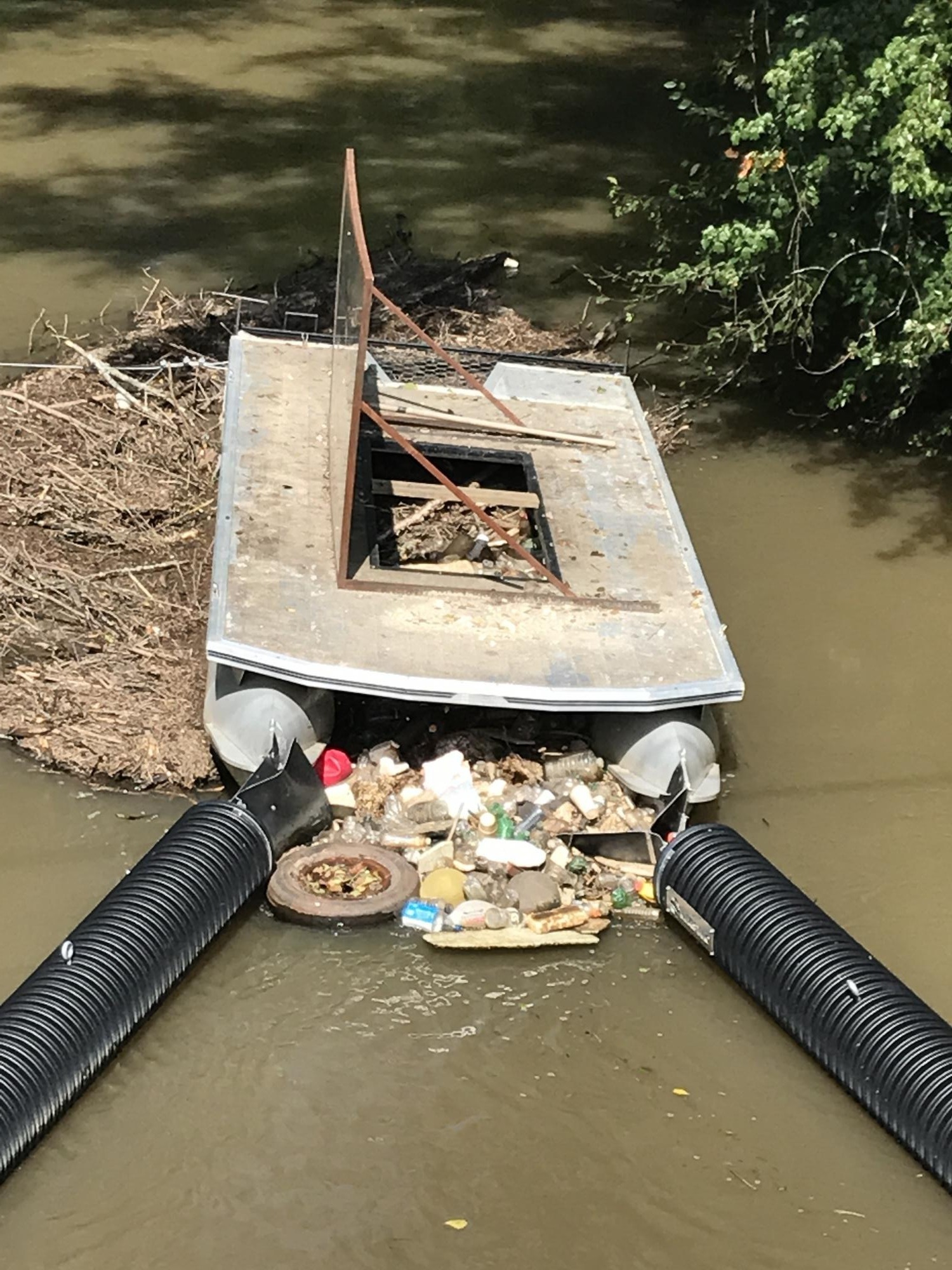
This photo shows Hendersonville's 'Trash Trout' trash collection device along Mud Creek. You'd be surprised how many plastic water bottles are pulled out of our streams.
Take Back the Tap!
The City of Hendersonville is thrilled to launch its Take Back the Tap campaign during this year’s Drinking Water Week!
Promoting the high-quality water that we provide to our community is at the heart of this event, and that’s why we want our customers to make an informed choice when it comes to the water they drink.
Would you buy a $10,000 sandwich? How about a $6,000 cup of coffee? These questions might seem silly, but it turns out that choosing to consume bottled water rather than tap water is the equivalent of answering, “yes,” and that choice strains your wallet more than you might think!
According to the EPA, the average price of tap water in America is approximately $2.00 per 1,000 gallons, which means that a 16-ounce glass of tap water will run you about three hundredths of a cent.
That’s why we agree with our partners at the American Water Works Association that tap water is always #ThereWhenYouNeedIt because it is delivered straight to your home, on-demand, twenty-four hours-a-day, at a tiny fraction of the cost of bottled water.
Tap water is also an environmentally responsible choice because it isn’t bottled, packaged, transported, or thrown out in the way that bottled water is. In fact, experts estimate that bottled water requires nearly 2000 times more energy to produce and distribute than tap water!
What’s more, bottled water isn’t subject to the rigorous standards of the Safe Drinking Water Act, which means that it is far less regulated than tap water.
And in case you were wondering about taste, survey after survey has shown that few people can actually tell the difference between bottled water and tap water, and many actually prefer the taste of tap!
We’re thrilled to encourage our customers to Take Back the Tap with us and celebrate the wonder of water during Drinking Water Week!
For more cool information on this topic, check out this awesome video sponsored by PBS, which outlines the “Real Cost of Bottled Water” and underscores the importance of supporting the work of your municipal utility.
Hendersonville's Water Treatment Plant offers tours of the plant for groups, school classes and others interested in the water treatment process. Please email WTF Manager Ricky Levi with requests.